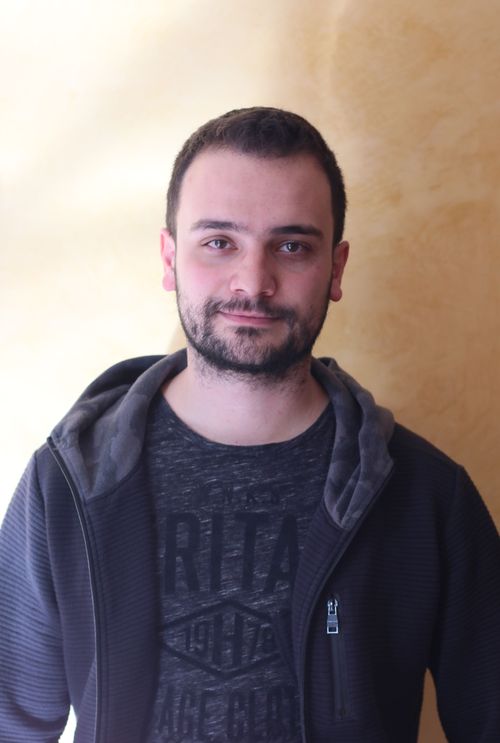Information on ADAGIO Fellows and Projects
Information on the successful candidates and their individual projects will be published here once the contracting procedures have been completed.
Information on the successful candidates and their individual projects will be published here once the contracting procedures have been completed.

Dr. Raúl Bombín is an ADAGIO postdoctoral researcher under an MSCA Cofund grant, in the THEO Group of Institut des Sciences Moléculaires (ISM) at the University of Bordeaux (Ubx). He completed his Bachelor's degree in Physics at the University of Salamanca in 2014 and the following year enrolled in a Master's degree in Nuclear Physics at the same university. Between 2015 and 2019 he developed his doctoral thesis in the Barcelona Quantum Monte Carlo (BQMC) group of the Universitat Politècnica de Catalunya (UPC), supported by an FPI grant from the Spanish Ministry for the Economy. The object of the study was ultracold dipolar gases in the quantum degenerate regime, and the PhD was supervised by Professors Jordi Boronat and Ferran Mazanti. To study such systems, Quantum Monte Carlo (QMC) techniques were used. QMC allows us to evaluate the properties of the system both at finite temperature and in the zero temperature limit. Most of the work was focused on two-dimensional (2D) systems, i.e., the superfluid and supersolid phases of bosonic dipolar atoms were characterized, and the limits to the regime of universality were determined for some systems involving dipolar fermions. The later research was boosted by a research stay at the BEC-center group (University of Trent, Italy). In collaboration with experimental group in Stuttgart, an accurate prediction for the critical atom number of dipolar dysprosium droplets was given. After that, he joined the "gas/solid interfaces" group located in Donostia/San Sebastián (Guipúzcoa). The group is specialized in the study of non-adiabatic effects in reactive processes on surfaces by employing electronic structure calculations from first principles, using density functional theory (DFT). He participated in two of the research lines of the group: first, the use of two-dimensional systems, such as MoSe₂ , for gas detection and catalysis, and, secondly, the study of the vibrational linewidths CO molecules adsorbed on the surface of a transition metal. In 2022 he obtained a Margarita Salas Fellowship in which he continued his research in both ultracold gasses and cathalisis with the BQMC and gas/solid groups, respectively. Since November 2023, he has been studying the importance of quantum mechanical effects in H atom scattering from Tungsten surfaces.
The goal of the project is to investigate the importance of quantum effects in the dynamics of atom scattering from clean and adsorbate covered tungsten surfaces. The results of this project will be of interest for the hydrogen fusion industry as some of the plasma facing components (PFCs) of the fusion reactors will be made of Tungsten. The fusion of hydrogen isotopes to obtain energy offers a promising, clean and renewable alternative to fossil fuels. However, to produce such fusion reactions, temperatures of hundreds of millions of Kelvin are needed. Achieving those huge temperatures suppose a major challenge as it are sufficiently large to melt any known material. Nonetheless, under those conditions the fusion fuel turns into a plasma, what allows to confine it inside the reactor employing magnetic fields. This makes plasma confinement control crucial in order to develop future fusion technology. The stability of the plasma is affected by several processes related to the interaction of the hydrogen isotopes with the PFCs of the reactor, that are usually made of tungsten due to its high melting temperature. Besides that, other impurity gases that are injected into the plasma with different purposes, can affect the reactor performance. when they interact with the PFCs. A microscopic characterization of such processes, becomes mandatory in order to develop accurate plasma controlling models. In this project I study the dynamics atoms scattering with the tungsten surfaces that are relevant for the fusion technology industry. Traditionally, this has been done by means of classical molecular dynamics including different energy transfer mechanisms between the hydrogen and the surface, essentially including electronic non-adiabatic effects and excitation of vibrational degrees of freedom. However, the small mass of hydrogen atoms makes it necessary to include quantum effects in the model in order to obtain accurate predictions. To do so I employ a smart combination of quantum and classical calculations techniques, that include both quantum effects and the above mentioned energy transfer mechanisms. The result of these calculations, may be used as an input to improve current state-of-the-art plasma controlling models.